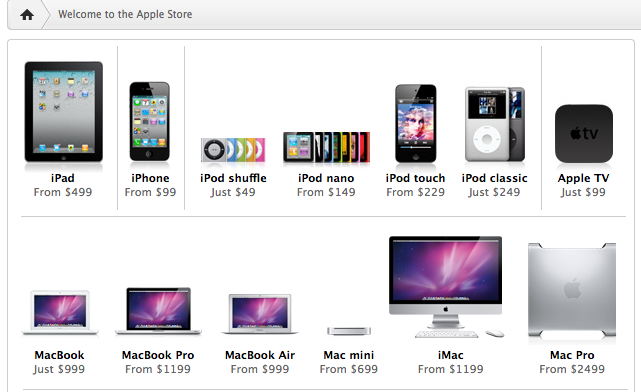In my last post, I began a discussion about e-waste versus print that I want to continue here. The discussion is drawn from a detailed interaction on an industry discussion board on the topic. The question raised was how the waste from electronic products impacts the comparison of the lifecycle analysis of print versus electronic media.
Here is a summary of the most pertinent observations made by participants:
Most printed products are recyclable. Many projects are printed on recycled paper, serve their purpose, and then are recycled back into other usable products. E-waste can contaminate ground soil and water and live in landfills for hundreds or years or more. By contrast, paper never has to go to a landfill. Even if it does, it degrades quickly.
E-waste is shipped to Asia (one participant personally knew of a small town full of this type of waste). While this waste is disassembled manually and the precious but poisonous metal is collected, the by-products destroy the local environment — at a profit far less than expected. “With electronic devices upgraded so frequently, most users don’t realize the destination of their 1-3 year old gadgets.”
The following are quotes from an article by Don Carli, director of the Institute for Sustainable Communication:
- “[Greenpeace estimates] by 2020 data centers will demand more electricity that currently demanded by France, Brazil, Canada & Germany combined.”
- “Computers, cellular networks and data centers are connected to the destruction of over 600 square miles of forest in the United States (alone), mostly due to strip mining for coal…which means the forest and environmental impact are irreparable.”
- “America’s adoption of networked broadband digital media and cloud based alternatives to print are driving record levels of energy consumption. The U.S. Department of Energy reports: electricity consumed by data centers in the U.S. doubled from 2000 to 2006, reaching more than 60 billion kw hours, roughly equal to the amount of electricity used by 559,608 homes in one year.
“That [referring to Don Carli’s stats cited above] is only looking back at 2006 (the era prior to iPhone, Android, e-reader and pad arrivals). When that study concluded, the EPA estimated ‘this rate of energy consumption by e-com could double by 2011.’ Here we are in 2011, and I’d bet even money that EPA estimate will turn out wildly conservative.”
If we want to save forests, this means using more paper. The less paper we use, the less demand for trees. That means conversion of forestland into land for agriculture or development. Private landowners (more than two-thirds of all land owned in the United States) need an incentive not to sell off their land for other uses. Every day the forest products industry plants more than 1.7 million trees in the U.S. (www.printgrowstrees.org)
The print industry uses only approximately 20% of harvested trees (Sappi.com), so paper is only a fraction of the consumption of forest products (furniture and fuel are others). Even if you want to save trees, this is only a partial solution.
Digital print production is a great way for business to reduce their carbon footprint since they have the ability to print only what they need — no overruns or minimum runs.
“A magazine in the United Kingdom compared the carbon footprint for producing its paper edition and its website a couple of years ago. The carbon footprint was broadly similar. However, it didn’t take into account recycling after use, which may give print the edge.” (This participant, who appeared to have been personally involved with the study, indicated that the research was proprietary so no further details were available.)
“Books eventually get recycled after they’ve been shared and passed along free of charge. Compare this to e-readers, which have to be constantly re-charged before turning into toxic e-waste.”
“From what I have read to date — including data published by both Greenpeace and the Mail & Fulfillment Service Association (MFSA) — is that e-mail has a larger negative impact than direct mail. However, every part of the supply chain has been taken into consideration from the acreage/landmass usage of the buildings housing the servers to the construction of those buildings to the trucks hauling logs to the paper mills, to the partially full USPS mail trucks dropping mail at their Bulk Mail Centers or other distribution levels. My own sense is that e-mail is more insidious as the harmful factors are not in plain sight, but literally hidden off-screen — and that allows us to have a misleading (and possibly false) sense of eco-security, as well as allow for more vested interest exploitation. It’s not just what you see that can kill you, but what you can see as well. Carbon Monoxide and Carbon Dioxide are both invisible to the naked eye.”
“Talking about green buyers has to include their real objection. I believe the green commitment is miles wide but nanometers thick. Underneath all else, consumers want price. It’s an emotion akin to greed. And all purchases, in my opinion, are emotional, then buyers start to use research, politically correct pronouncements and other tweets and likes to justify their purchase.”
Looking for further reading? Participants offered several suggestions:
“Is Digital Media Worse For The Environment Than Print?” This article, written by Don Carli, director of the Sustainable Institute for Communications, has been selected as a finalist nominee for a 2011 Mirror Award by the Syracuse University S.I. Newhouse School of Public Communications.
“The Environmental Impacts of Electronic Communications.” Written for RISI, an information provider for the forest products industry, it takes a brief look at some key environmental impacts over the lifecycle of computers and their various accessories
“The Mediavore’s Dilemma: Making Sustainable Media Choices.” Also written by Don Carli and published in the MediaShift section of PBS.org.
“Greening Print Marketing: A Practical Guide.” Although the report doesn’t attempt to quantify the footprint of either print or e-media, it does provide detailed,60+ – page discussion of print as a sustainable communications medium in contrast to e-media.
To wrap this up, I would add that as consumers of energy, we don’t see the volumes we consume, the impact of the production of the fuel used to produce that energy, or the impact of the disposal of the end product. Print — especially when using environmentally certified paper — has a far smaller footprint than it used to and compares very favorably compared to e-media on all of these issues.
In fact, Rochester Institute of Technology recently did a study that also shows the significant investments printers have made in monitoring and quantifying their environmental efforts, including adoption of formal sustainability plans and environmental certifications. (See related IE post.)










